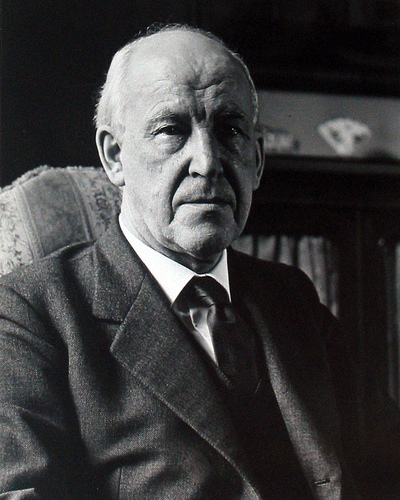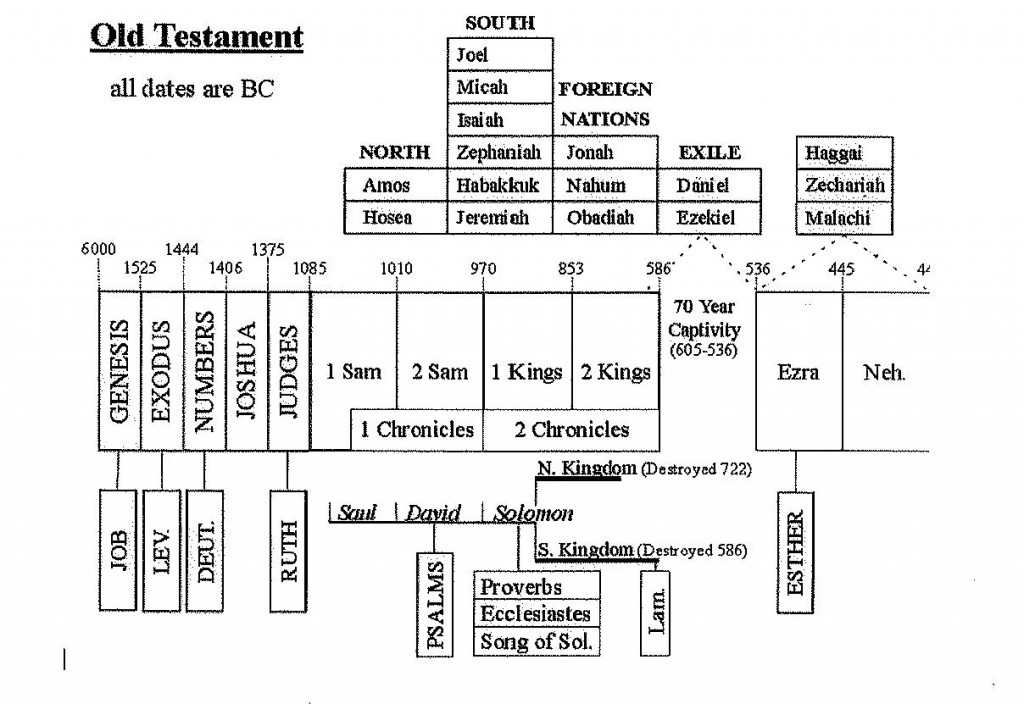 Our church is currently studying through the book of Romans. What follows is an introduction to the book that I gave at an evening service the Sunday before we began the book. This introduction is very bare-bones, but may be helpful to some in their own study of the book. The sermons for Romans, including this introduction, can be listened to on our church’s website or podcast. I give acknowledgments at the end, along with recommendations for additional resources.
Our church is currently studying through the book of Romans. What follows is an introduction to the book that I gave at an evening service the Sunday before we began the book. This introduction is very bare-bones, but may be helpful to some in their own study of the book. The sermons for Romans, including this introduction, can be listened to on our church’s website or podcast. I give acknowledgments at the end, along with recommendations for additional resources.
In the history of Christianity, Romans is one of the books that the Lord has used time and time again to hold back the gates of hell from consuming the church while at the same time propping open the door of heaven that sinners might be reconciled to God.
Romans serves as a reservoir of Gospel truth from which God invites His people to come and drink deeply. In its pages are some of the clearest presentations of doctrinal truth on which the church rests its eternal hope. At the same time, Romans is a powerfully practical book that gives wisdom to the church about how to love one another in light of God’s love toward us.
Above all, Romans is a book that presents the glory of God and the glory of His Son Jesus Christ. It is one of the Lord’s finest instruments to instruct sinners and saints alike. It has served as window through which many a rebel first saw the sweetness of the Savior.
In fact, one of the few things I have in common with Augustine, Martin Luther, John Bunyan, and John Wesley is that God used the book of Romans to convict us of our sin and draw us to Christ.
Augustine, was sitting in a garden and heard a voice say, “take up and read, take up and read.” He read Rom 13:13-14 “Let us walk properly as in the daytime, not in orgies and drunkenness, not in sexual immorality and sensuality, not in quarreling and jealousy. But put on the Lord Jesus Christ, and make no provision for the flesh, to gratify its desires.” He was converted and became arguably the most influential Xian between Paul and Reformation.
Martin Luther was a catholic priest who was preparing to teach Romans to his students, but as he was preparing he read Rom 1:16-17 in a way he never had before “I am not ashamed of the gospel, for it is the power of God for salvation to everyone who believes, to the Jew first and also to the Greek. 17For in it the righteousness of God is revealed from faith for faith, as it is written, “The righteous shall live by faith.”
God struck Luther’s heart with the word “righteous” and used it to push him to the cross of Christ where He found his rest in Christ’s righteousness. As a result, God used Luther to spear head the Protestant Reformation, a movement in which God restored Gospel truth in His church.
Years later God used Romans and Galatians and Luther’s commentaries on it to open the eyes of John Bunyan who became a faithful pastor. During one of his stays in prison for preaching the Gospel, Bunyan penned Pilgrim’s Progress, which became one of the most well-known books in the history of the world.
God used Romans in a similar way in the life of a man named John Wesley. While reading Romans and Luther’s commentary on it had his heart “strangely warmed” and he was converted. God used Wesley as a great evangelist, pastor, and founder of the Methodist Church.
For me, Romans was one of the books God used to pierce my own heart when I was 21 years old. At that time I was lost in a life of drink and drugs and perversion. Two weeks after a friend boldly witnessed to me, I was overwhelmed with guilt during a party, so I went into my room and picked up a Bible my parents had given me and one of the texts I read that night was Romans 2:4 which says, “do you presume on the riches of his kindness and forbearance and patience, not knowing that God’s kindness is meant to lead you to repentance?” By God’s grace, the Lord transformed my life through that mercy; and He still is today.
I share these testimonies because as we prepare for this study in Romans, my prayer is that many more sinners will be saved and many more lives will be emboldened by God’s power as presented in the Gospel.
Introduction
The basics:
1. Author: Apostle Paul (1:1). He was a missionary to the Gentiles who planted churches, but he didn’t plant the church in Rome.
2. Audience: Roman Christians. The church was made up mostly of Gentiles who became Christians. (Rom 1:5-6, 1:13, 9:3-4, 11:13-31)
3. Date: Winter 56-57AD. Paul likely composed the letter in Corinth on his 3rd missionary journey (Acts 20:1-3). The letter was probably delivered by Phoebe (Rom. 16:1-2) while Paul went back to Jerusalem to delivered the financial relief he had been collecting for the suffering church there (Rom. 15:25).
The background: these are several cultural and religious factors that are important to help us understand Romans.
1. Rome’s population was well over 1 million people. The Emperor (Nero) was viewed as divine and called “Lord and Savior.” His birth was announced as a “gospel” and he promised to bring “peace” to the world [Pax Romana]. Jesus’ reign and kingdom are the truth of which the Roman Empire was an imposter.
2. Rome was home to thousands of Jews and some God-fearers (Gentile converts to Judaism) who worshiped the true God of Israel in the synagogue.
3. The church in Rome likely began by people converted at Pentecost. In Acts 2:10 we learn that “visitors from Rome” were present and some were apparently believed the Gospel that was being proclaimed. Following this, they returned to Rome with the Gospel and shared it in their synagogue. No evidence suggests an apostle ever visited Rome before Paul.
4. The only Scriptures the early church had were the OT. The letters of the apostles had just begun their circulation and were not part of the completed canon yet. The Law was rightly viewed by Jews and God-fearers as a wonderful blessing from God that revealed His character and His will. (7:12; Ps 119).
5. A constant struggle of the early church was to determine to what extent Gentile converts should obey the Law. Some held that circumcision, Sabbath observance, and keeping the food laws were required, while others did not. This struggle is a major theme of the New Testament (Acts, Galatians, 1 Cor. etc.).
6. Emperor Claudius (41-54AD) ordered a mass deportation of Jews from Rome in 49AD. This was probably a result of disturbances in synagogues over the Christian Gospel. (Acts 18:2)
7. The deportation emptied the church in Rome of Christ-believing Jews, leaving mostly God-fearers. This greatly reduced the “Jewish influence” on the Roman churches.
8. As the Gospel spread, Gentiles with no Jewish affiliation believed and joined the church. They had no conviction to keep Jewish Law and customs. This resulted in tension over how to rightly worship God.
9. The tension grew as Jews returned from deportation and discovered the church, that was founded upon their Messiah, their Law, and their rituals had drastically changed.
10. The church was divided over what it meant to worship Jesus the Christ correctly. Those who wanted to follow the Jewish customs (the weak) were judging those who did not (the strong.)
PURPOSE OF ROMANS:
Paul called the Roman churches to worship God according to His will, by obeying the Gospel of Jesus Christ through the power of the Holy Spirit. By living in Gospel-centered love, God is glorified and the Mosaic Law is fulfilled (Rom. 13:8-10).
Or probably a better option…
Romans was written to the believers in Rome to remind them of the Gospel (ch. 1:1-11:36), to unify them in Gospel worship (ch.12:1-15:13), and to compel them to help Paul proclaim the Gospel to Spain (15:14-16:27).
OUTLINE OF ROMANS: THE GLORIOUS GOSPEL OF GRACE IN JESUS
(1:1-17) INTRODUCTION: THE GOSPEL OF JESUS CHRIST
1:1-7 – The Focus of the Gospel (Jesus Christ)
1:8-17 – The Promise of the Gospel (By Faith in Christ Alone)
(1:18-3:20) CONDEMNATION: THE NEED FOR THE GOSPEL OF JESUS CHRIST
1:18-32 – The Hardened Heathen’s Need for the Gospel (God’s Wrath is Upon Them)
2:1-29 – The Hypocritical Hebrew’s Need for the Gospel (God Requires Obedience, Not Just Knowledge)
3:1-20 – All of Humanity’s Need for the Gospel (God is Righteous, All Fall Short)
(3:21-5:21) JUSTIFICATION: THE RESULT OF THE GOSPEL OF JESUS CHRIST
3:21-31 – God Justifies Sinners through Faith in Christ
4:1-25 – God’s Excellent Example of Justification by Faith (Abraham)
5:1-11 – The Result of the Gospel: Freedom to Rejoice in Hope
5:12-21 – The Result of the Gospel: Freedom from the Curse
(6:1-8:39) SANCTIFICATION: THE TRANSFORMATION IN THE GOSPEL OF JESUS CHRIST
6:1-23 – The Result of the Gospel: Freedom from Sin’s Slavery
7:1-25 – The Result of the Gospel: Freedom from Law
8:1-39 – The Result of the Gospel: Freedom, Hope, & Security in the Spirit
(9:1-11:36) MAGNIFICATOIN: GOD’S WISDOM AND MERCY IN THE GOSPEL OF JESUS CHRIST
9:1-29 – God’s Purpose in Election: Mercy & Glory for Jews & Gentiles
9:30-10:21 – Paradox of God’s Purpose: Israel Stumbles & Gentiles Receive Mercy
11:1-36 – Outworking of God’s Purpose in History: More Mercy to More People
(12:1-15:13) ADORATION: GOD-HONORING WORSHIP THROUGH THE GOSPEL OF JESUS CHRIST
12:1-13 – Living Sacrifices: Humbly Love as the Body of Christ (Among Believers)
12:14-13:7 – Living Submissively: Humbly Trust God’s Justice (Among Enemies)
13:8-14 – Living Lawfully: Fulfilling the Law through Love (Among All People)
14:1-12 – Putting on the Lord: Be Free from Judgment
14:13-23 – Putting on the Lord: Pursue Peace with Each Other
15:1-13 – Putting on the Lord: Jews and Gentiles Hoping Together in Christ
(15:14-16:27) GOD’S WORK THROUGH PAUL FOR THE GOSPEL OF JESUS CHRIST
15:14-21 – God’s Power Fuels Paul’s Ministry to the Gentiles
15:22-33 – Paul’s Plan to Visit Rome
16:1-16 – Paul’s Personal Greetings
16:17-27 – Paul’s Final Exhortation and Doxology
Any good thing that comes from this study is because of God’s grace through His Spirit. I was greatly helped by John Piper’s sermons, Tommy Nelson’s personal discipleship, and the commentaries on Romans by Dr. Martin Lloyd Jones, Jonathan Edwards, Matthew Henry, Thomas Schreiner, and Douglas Moo. For a good list of Romans resources check out Challies’ recommendations.






